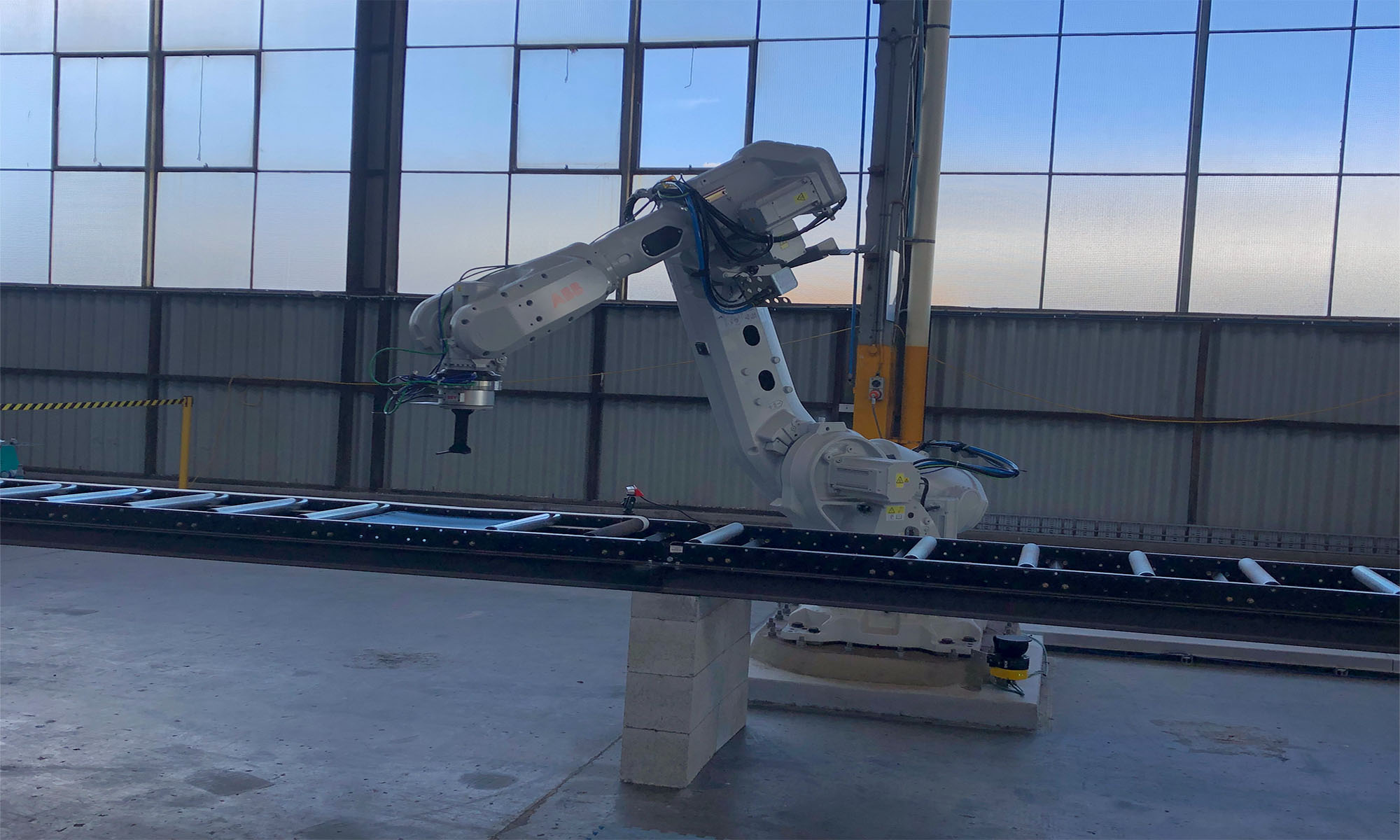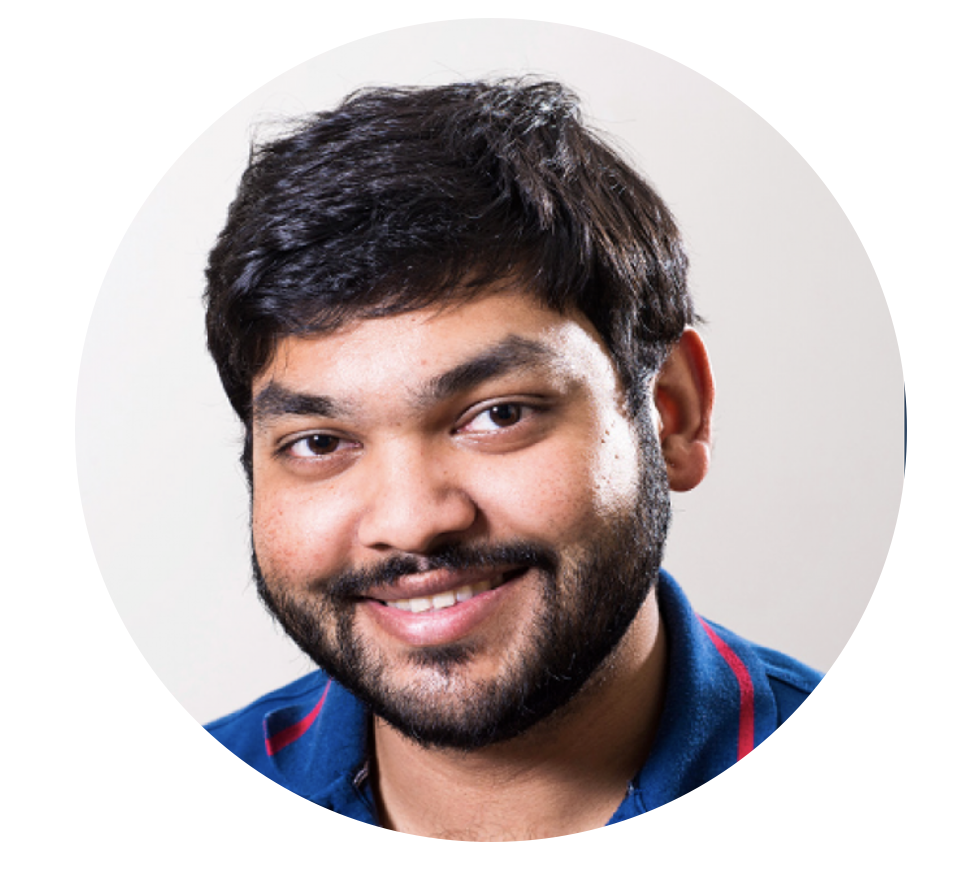
ANAT Synapse Residency 2022 – Steph Hutchison & Jonathan Roberts @ARM Hub

Lead Engineer Das has been perfecting the box throw technique.
Dr. Dasun Gunasinghe holds a dual degree in Mechatronic Engineering and Business Management from the University of Queensland, and currently works as a Senior Research Engineer (Robotics and Autonomous Systems) for the Queensland University of Technology (QUT), based within the QUT Centre for Robotics. Previously, he received a PhD in robotics from the University of Queensland for the study of novel conflict avoidance strategies for uncrewed aircraft using stand-alone, independent systems. Since then, he has been involved in and lead numerous industry projects regarding: (a) collision avoidance benchmarking for mining vehicles; (b) through-ground communication systems for mining environments; (c) manipulator (robotic) implementations both in mining and the steel manufacturing industry; and (d) various ground robot and vision-based robotic manipulator research projects.
Could embodied practice methods informed by dance practice be developed specifically for different professions to develop kinaesthetic awareness and empathy? How might a daily warm up shared by a robot and human collaborative team assist in calibrating both for their work day?
Some tasks to consider adapting:
Sensing: begin with eyes closed, notice how you are breathing today, without changing anything – notice where your weight is in your feet, experiment with playing with sending your weight into different parts of your feet allowing your body to move like a reed flowing with the shifts in weight
CircularityContinuity&Flow: continuing with eyes closed, let’s play and build upon the flow of shifting weight noticing that we may have developed some loops or patterns of movement as we shifted our weight through the soles of our feet. We will now work with the concepts of circularity, continuity and flow as they relate to “turning” in dance. Circularity, continuity and flow can be located at any point of the body. You might locate this in your wrist, knee, ribcage, thumb…. Play with oscillation, never completing the circle. Experiment with taking circularity, continuity and flow travelling through space, you might like to open your eyes forming a soft gaze as you move through space, sustaining circularity, continuity and flow.
Walking: take a walk through space, moving in any direction. As you pass someone make eye contact with them. Begin to play with moving in to negative space. Decrease the size of the space by half, sustain moving in to negative space. Decrease the size of the space. Flock to the centre point to create a cluster.
Breathing: Coming to standing still in the cluster, returning to eyes closed. We are going to try to find the collective breath. Let’s take a breath in over 5 and out over 5. (Continue this overing different series of counts and vary in and out timings)
Consensus: We’re going to sustain this group breath as we sense each other, looking for the group’s consensus to lower to a crouch and rise again. Sustain the timing of each other as we look to lower together and rise together.
Movement Whispers: form a straight single file line all facing in this direction. Your task is to send a movement message down the line. Tap the person in front of you on the shoulder, they will jump around to face you. Perform your movement. Once received to the best of your ability replicate the movement as you pass it on to the next person and so on. Once at the end of the line – perform the movement you received so the whole group can see and then the first person performs the movement was they sent down the line noting what has changed along the way.
Pathways: Draw a path through the page. Consider how you use the pen/pencil/marker on the page – what kind of pressure, texture, stroke might you use. Use a part of your body to interpret the path. Perhaps try this with another body part, can both interpretations be performed at the same time? Swap your map with another person and as you do offer them an instruction or series of instructions to perform your path. Discuss with your buddy what you both notice about performing the others’ path and the interpretations.
Shake: begin to shake, gently developing from a quake in the pelvis, ricochet through the body playing between levels of vigour – notice the heat and sensations building inside the body. Propose variations throughout and choose music that invites shaking and variation.
Partner work – Points: One partner eyes closed, the other eyes open standing behind their partner. Partner with eyes open offers their partner stimuli in the form of placing a part of their own body with a specific quality of touch on their partners body – partner receives information by noticing and not responding. Build through stages of moving towards or away from point of contact, respond to touch, recall information received and discover your own dance independent of partner.
Ball of light: imagine a ball of light inside your body. what colour is it? What size? Task – using the ideas tipping and pouring move the ball through the inside of your body. Next step – body as pinball machine – ricochet the ball through the body. Next step ball on the surface of your skin traveling in contact on the outside of your body. Next – play with size, texture, weight etc. Next – ball in more of throw/catch relationship using any point of the body. Next exchange between partners, catch take the energy of the ball into your body continue its path and pass it back.
Below are some examples of what is possible with highly trained bodies.
A next step for me is thinking through how to make appropriate embodied movement tasks to train humans working with Cobots or industrial robots to enhance kinaesthetic awareness and empathy (for human and non-human collaborators). The goal being to assist humans to perceive the movement of their robot collaborator and potentially move to towards more improvisational work that does not require programmed/repeatable movement. Can we create approaches that might lead to greater flexibility for work and working across different tasks more efficiently?
A caveat of the videos below is that these are choreographed movements that have been thoroughly rehearsed. However, how expert performers are trained and how they practice does offer a way to consider the types of embodied methods that could be enlisted to calibrate any human for their work.
I have been thinking a lot about thresholds since we started the project. Thresholds for me relate to safety, comfortability, barriers, awareness, reading intention and perception. At the moment we are throwing boxes with the robot arm to me behind a barrier. The barrier has moved in recently but remains at a distance beyond the reach of the robot. My question is can we remove the barrier and share space? Move more intimately around one another?
The industrial ABB robot I have been working with at the ARM Hub has lasers that provide information about movement within the robots work space and act as a safety switch. This has led to the approach of throwing the box and developing game structures with me behind the barrier.
The challenge for me behind the barrier is becoming one of missing the tactility and more direct interaction when able to work more closely together.
It was suggested that perhaps working with the model of the robot in the HoloLens might be a solution. However, this becomes another vision based tool, with a strong frontal relationship that doesn’t enable my whole body at once to be involved in sensing and responding to the robot. I’m wondering how we can move beyond relying on vision as a feedback mechanism and engage our senses holistically to perceive, interpret and respond appropriately. Can I attune myself to reading the robots next move without seeing it?
The next big thing for me is to have a conversation with a safety expert. I’d like to ask a series of curly questions to see how much closer I can be to the robot and what negotiations might need to occur.

Jon and I are working on games we can play with the ABB robot as a means to get to know how it might move and develop some behaviours. Our current project is “fling it” – with Das’ assistance we are experimenting with ways the robot can throw a box.
Our goal at present is to throw a small box beyond the safety barrier – the videos below demonstrate some of our attempts. Our methods have included:

Jonathan Roberts
I am a Professor in Robotics within the School of Electrical Engineering and Robotics at Queensland University of Technology (QUT). I am the Director of the Australian Cobotics Centre and also the Technical Director of the Advanced Robotics for Manufacturing (ARM Hub. I am a Chief Investigator at the QUT Centre for Robotics, and an Associate Investigator at QUT’s Centre for Biomedical Technologies. My main research interests are in the areas of Field Robotics and robotics that incorporates human interaction such as Medical Robotics, Performance Robotics and Design Robotics.
I graduated from the University of Southampton, UK, in 1991 with an Honours degree in Aerospace Systems Engineering. I then furthered my interest in computer vision while completing a PhD (1991-1994) at the University of Southampton where I also developed skills in parallel computing. In 1995 I joined CSIRO (Australia’s largest government research agency) to work in the area of mining robotics where I worked on numerous large robot machines including 3,500 tonne draglines, 30 tonne underground haul trucks and autonomous underground explosive loading vehicles. Work with my colleagues on the navigation system of semi-autonomous Load-Haul-Dump (LHD) vehicles was commercialised by Caterpillar.
I was appointed a Science Leader at CSIRO in the area of Robotics and then went on to lead the Autonomous Systems Laboratory also at CSIRO where I was Research Director. I co-invented the UAV Challenge Outback Rescue, an international flying robot competition in which teams search for a lost bushwalker using autonomous robotic aircraft, and I am featured on BBC International News in 2014 and 2016 talking about the event.
In 2013 I, along with my research team, won the Australia and New Zealand Internet Award for Innovation for their Museum Robot Project. This project deployed two mobile robots in the National Museum of Australia in Canberra which were used by remote school students to visit the museum with an educator guide, on a weekly basis. In 2013, I made international news by being the first person to 3D map the interior of the Leaning Tower of Pisa using our team’s Zebedee mobile mapping system. My colleagues and I mapped Fort Lytton in Brisbane in conjunction with Queensland Parks and The University of Queensland, and it became the first Australian heritage site to be archived on CyArk, the international digital cultural heritage database.
In 2014 I left CSIRO to join QUT and in 2017 I became a Chief Investigator at the Australian Centre for Robotic Vision. I was part of the team that in 2017 was awarded an Australia-India Strategic Research Fund project to develop new vision technologies for minimally invasive knee surgery.
I was President of the Australian Robotics & Automation Association Inc. from 2007-2008, and between 2008 and 2013 was Deputy Research Director of the Australian Research Centre for Aerospace Automation (ARCAA), a joint venture between CSIRO and Queensland University of Technology (QUT). I am a frequent contributor to The Conversation where I write on many topics related to robotics and the use of technology in society.

Steph Hutchison
Steph Hutchison is an artist-researcher, choreographer, performer, and teaching-artist. Steph has a rich dance practice as a solo choreographer/performer and collaborator within dance and technology contexts. As a dance artist Steph creates and performs primarily improvised solo dance works that focus on extreme physicality and endurance of the human body, or engage a dialogue with digital technologies and systems. Steph’s work is also informed by her collaborations with motion capture, animation, robotics, haptics, and artificially intelligent performance agents. She has collaborated extensively on art, research, and industry projects with Deakin Motion.lab (2009 – 2016), John McCormick (2014 – present), and Louis-Philippe Demers (2018). As a teaching-artist Steph began her practice as Artist in Residence for Arts Centre Melbourne (2005 – 2011). Teaching artistry underpins Steph’s work as a dance academic.
Steph completed her PhD research at Deakin University’s Motion.lab – meta: discourses from dancers inside action machines. Her PhD research was informed by her choreographic and performance practice in contemporary dance, circus arts, improvisation and technology contexts. In meta, Steph researched the dancer’s experience within different systems – techniques and practices of the body, environments, with equipment, and technologies. She was focused on how systems operate to produce new kinds of bodies in dance. This builds on her Master of Arts research into the hybrid body in dance, and is applied within her collaborations and the development of her teaching practice. Understanding systems and working in collaboration with systems and technologies enables Steph to collaborate extensively on research projects such as Dance Haptics – making dance performance accessible to vision impaired, blind and deaf-blind people. And, to teach in transdisciplinary contexts where embodied practice and embodied experiences can be developed to transform participant’s experience, knowledge and ideas as they work in creative collaborations with digital technologies. Steph’s current research builds upon her Physical Thinking Prototypes establishing processes, methods and systems for constructing dancing bodies and ways of thinking in the digital age. Physical Thinking Prototypes also provided a methodology for calibrating participants systems within the Ars Electronica Futurelab Academy at QUT (2017 & 2018) – enabling, opening and creating potentials via embodied practice and experience.
Cobotic Improvisations (CI) draws on dance improvisation and choreographic methodologies to research how humans might predict the movement of their robot collaborators. Prof Jonathan Roberts and dance researcher Dr Steph Hutchison will collaborate on the CI project at the Advanced Robotics for Manufacturing Hub (ARM Hub).
In speaking with Jon, he mentioned that an under researched area in robotics is how humans might predict the movement of robots. This has provided the jumping-off point for us to begin our exchange.
How cobots move and how they might move as wholistically as possible in the fullness of their embodiment is exciting to begin exploring in the context of manufacturing. In previous projects such as Eve of Dust and Emergence with John McCormick part of the work is in reading the body of the other – robotic arm and AI performance agent respectively. By learning its’ body and potential for action it is possible to undertake a rich practice of exchange where my body becomes entangled with theirs and we find a shared dance.
The CI used for this project title is echoed in the dance practice Contact Improvisation. Drawing on the practice of CI in our research we will engage in a staged process over time with the cobots to build rapport and trust. We have three phases of development:
My practice more broadly is in dance, where my interests have been in the hybrid body, extreme physicality and systems as external frameworks to inspire movement creation. Collaboratively, my practice is driven by opportunities to experiment at the nexus of art, science and technology and contribute my embodied knowledge and practice to projects. Dialogues with different systems, creative risk taking, improvisational and choreographic methodologies all underpin our current enquiry.
Last week I had the opportunity to attend the Australian Cobotics Centre’s mid-year Retreat. It was fantastic to hear about the different programs and from the members of projects under way.
The opportunity to also share this project and the history of dance/performing robot collaborations was really exciting. I greatly appreciated the questions and opportunity to share a perspective on why embodied knowledge and experience might lead to closer working relationships between humans and robots.
The video is a reel of past collaborative projects.
Projects included in the video & key collaborators:
Repeat – Louis-Philippe Demers
Eve of Dust – John McCormick & Adam Nash
The Travelling Garden of Life – Jonathan Roberts, Jared Donovan, Yanto Browning
Garden of Minuscule Delights – Jonathan Roberts, Jared Donovan, Yanto Browning, John McCormick
Pinoke – John McCormick